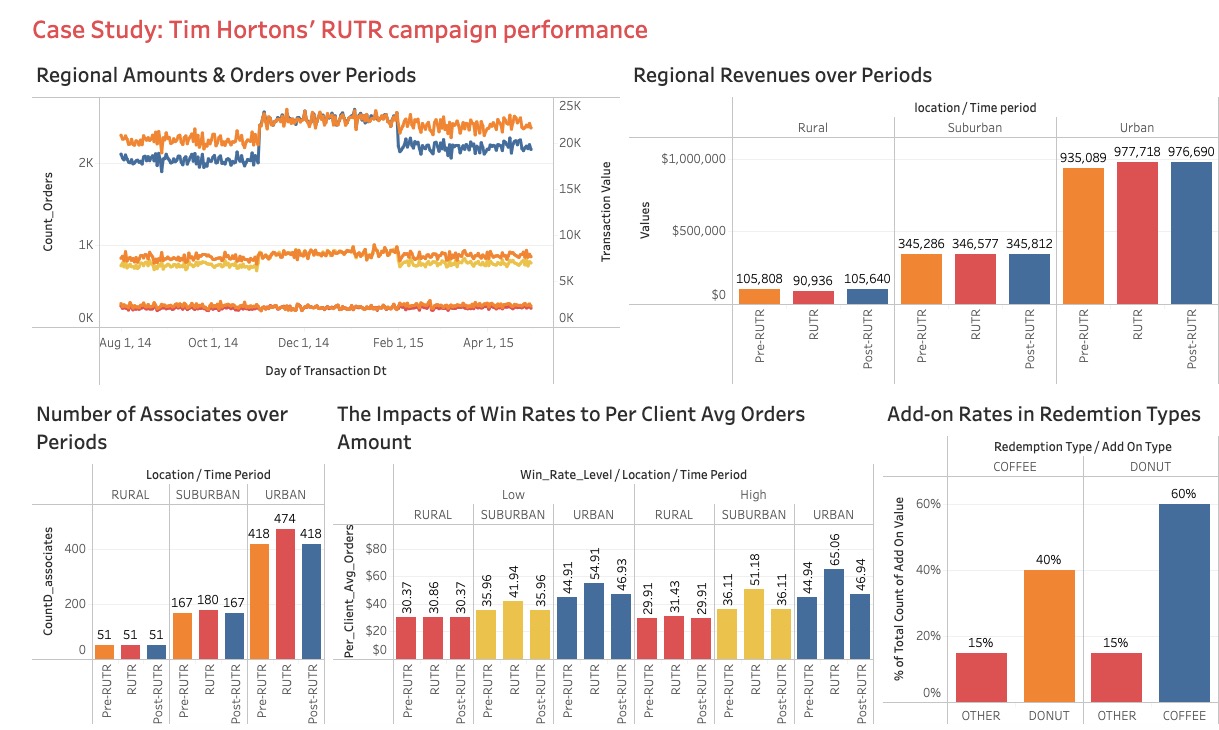
Rolling to Profits: An Analysis of Tim Hortons' Roll Up the Rim to Win Campaign on Customer Transactions and Profitability
The Roll Up the Rim to Win (RUTR) campaign is a key aspect of Tim Hortons' loyalty program, and has been instrumental in improving the Canadian coffee chain's profitability. This case study analyzes 900k transactions over 9 months, with a focus on the RUTR active period of 3 months, across 50 stores in urban, suburban, and rural locations. The findings show that urban stores experience a noticeable transaction surge during and after the campaign, while rural stores do not see an increase in transactions. The higher win rate stores were found to have a higher transaction volume per customer, suggesting a rise in repeat visits. Redeeming a prize for a donut results in a higher likelihood of making an additional purchase compared to coffee. The distribution of coffee prizes is likely to result in negative profits, while donut prizes are more profitable due to their higher add-on rate and higher margin add-ons. The overall campaign was deemed to be profitable due to strong reactions in urban stores, but unprofitable in rural stores and had limited impact in suburban stores.
Get ready to delve into the world of loyalty programs and drive business success!


(Insight 1)
Discover the impact of the Roll Up the Rim to Win campaign on urban and rural store transactions! Urban stores experience a noticeable transaction surge during the campaign and even after it's over, providing long-lasting benefits. On the other hand, rural stores do not see an increase in transactions during or after the campaign. Get a deeper understanding of the effects of loyalty programs on different store locations.

(Insight 2)
Urban and Suburban stores perform well during the RUTR campaign, while Rural stores see a daily revenue decrease during the same period.

(Insight 3)
Urban and suburban stores increase staffing during the RUTR campaign, while no change in rural store staffing.

(Insight 4)
If redemptions are considered to be an indicator of winning odds, then the likelihood of winning a prize is estimated to be 17%, equivalent to a 1 in 5.8 chance. It's worth noting that the distribution of prizes is slightly biased towards coffee prizes, with a +10% skew in their favor.
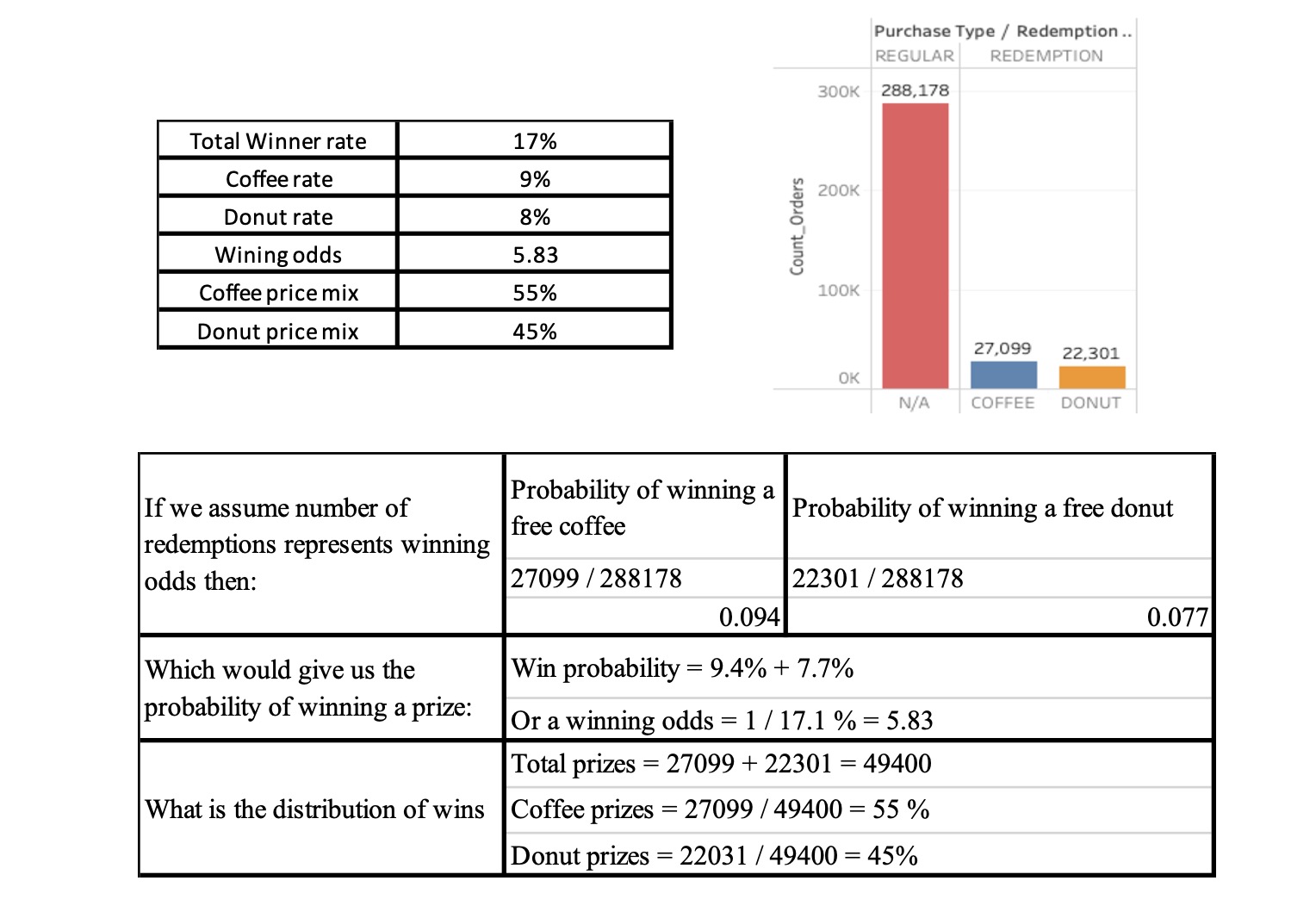
(Insight 5)
Six stores were observed to have a significantly higher win rate compared to other stores in the same category. This was part of an experiment conducted by management to determine the impact of an increased frequency of prize redemptions on customer visits. After controlling for location, the higher win rate stores were found to have a higher transaction volume per customer, suggesting a rise in repeat visits.
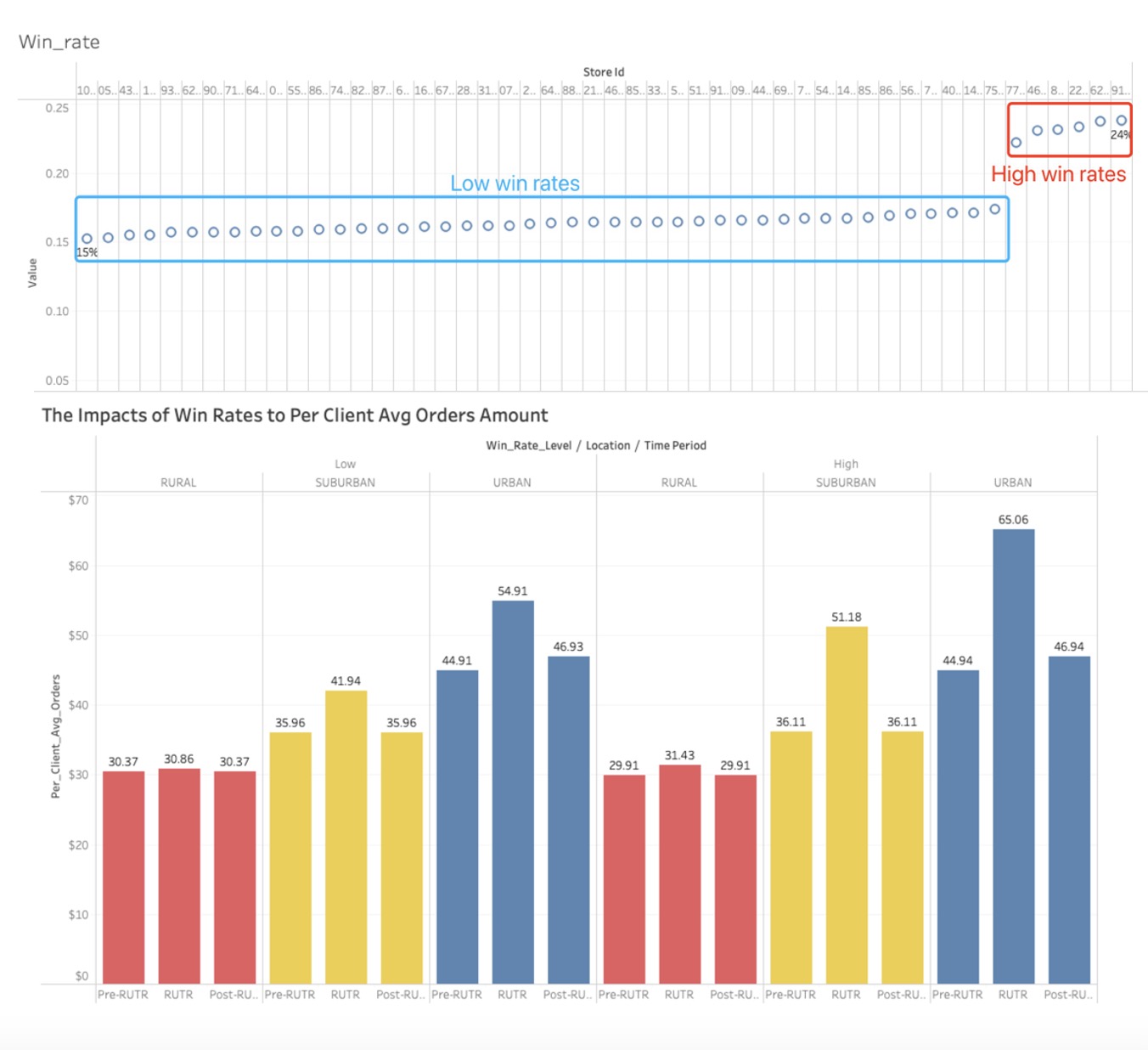
(Insight 6)
Redeeming a prize for a donut was found to result in a 20% higher likelihood of making an additional purchase, compared to redeeming a prize for coffee.
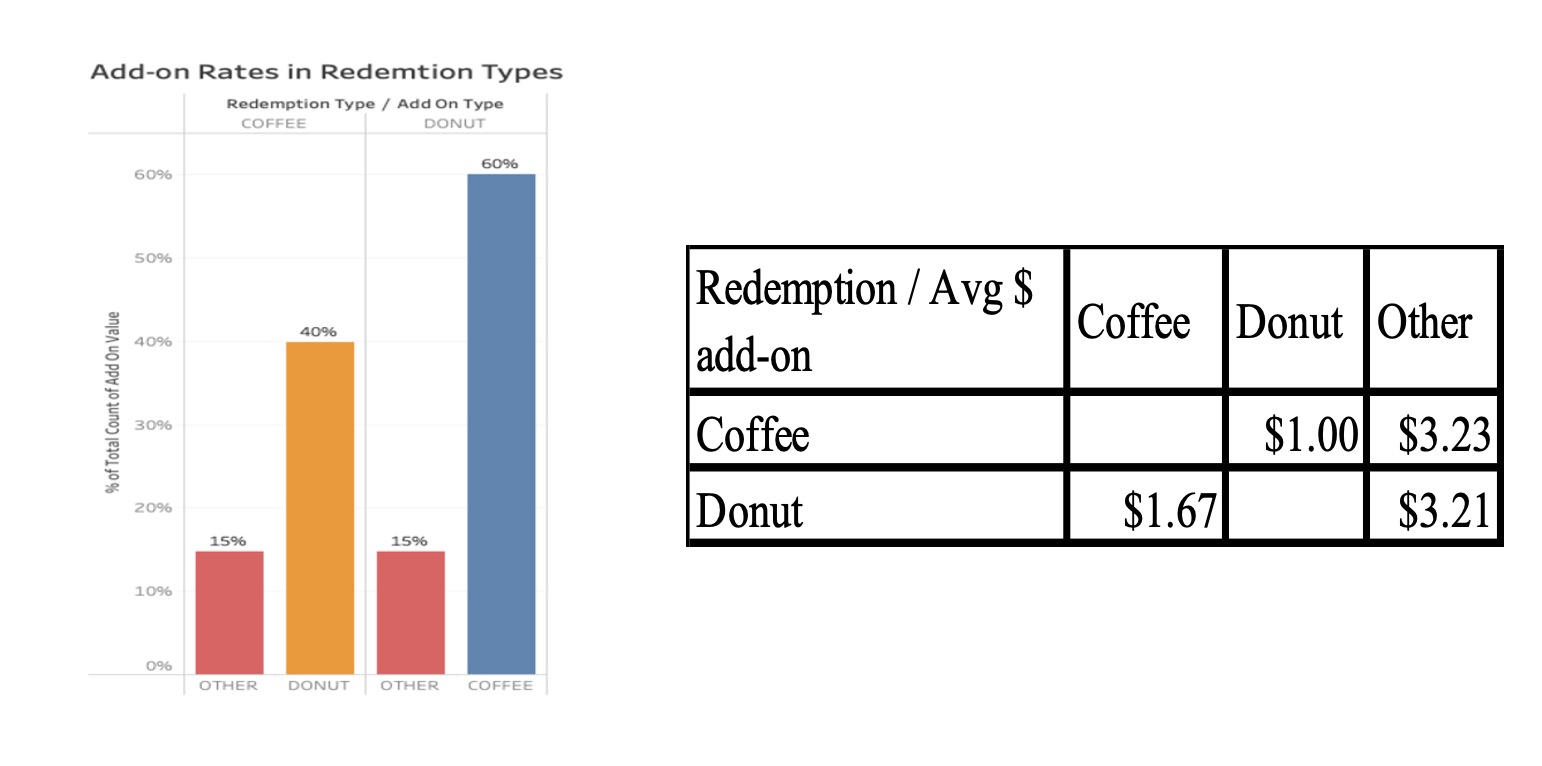
(Insight 7)
The distribution of coffee prizes is likely to result in negative profits from incremental transactions, as the add-on rate is low. In contrast, donut prizes have a significantly higher add-on rate and higher margin add-ons, making them more profitable. It's worth noting that coffee prizes are cheaper than donut prizes due to their lower cost structure.

In order to determine the optimal level of prize distribution, a market research study was conducted last month to explore the best mix of prizes for the 2019 Roll Up the Rim campaign. The study surveyed a sample of participants to gather insights and inform decision-making.

(Insight 8)
Theorizing On the Construction of P&L Model
Overall Operating Profitability - Template

In conclusion
The overall campaign was deemed to be profitable due to strong reactions in urban stores. However, upon closer examination, the campaign was found to be unprofitable in rural stores and had limited impact in suburban stores.
Feeding Back Insights Into Strategy Design
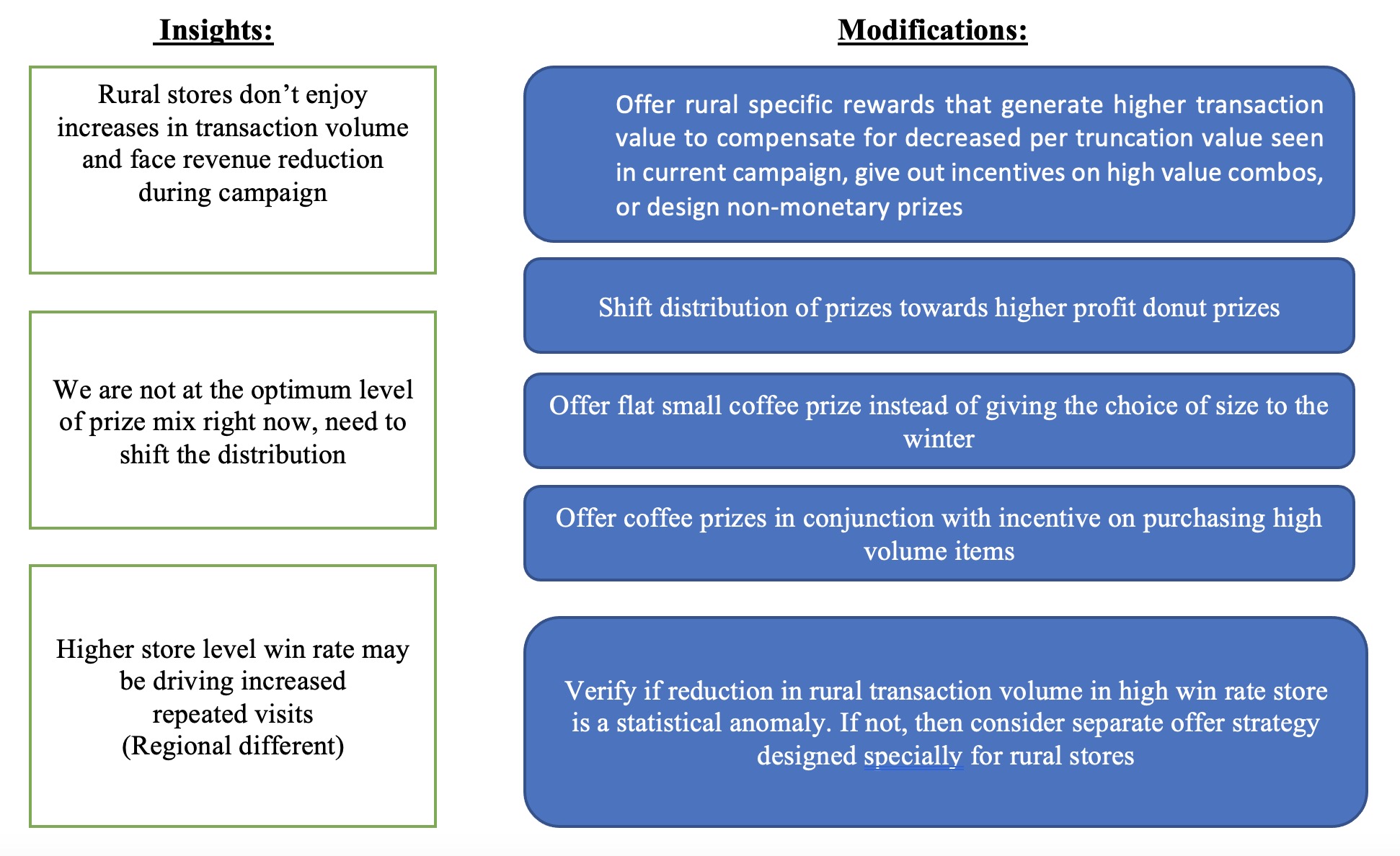
- Here’s the Tableau Viz of Tim Horton' RUTR campaign performance (interactive).
